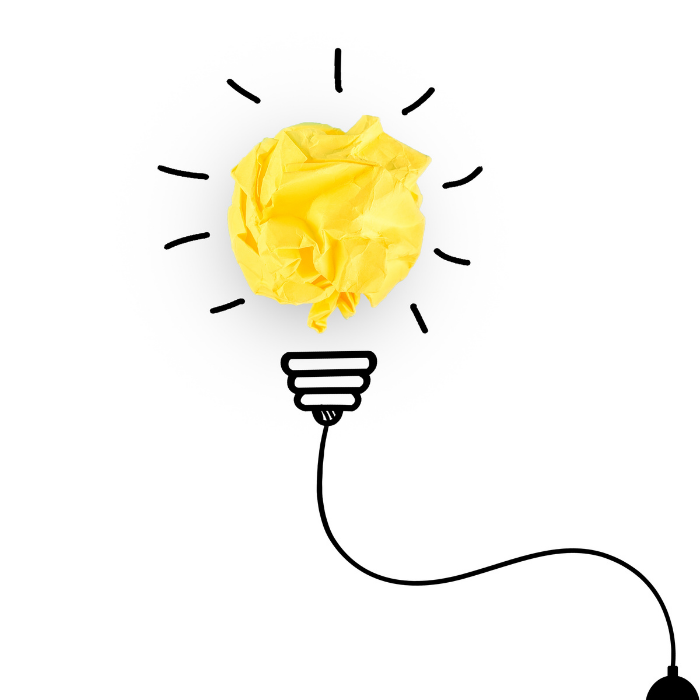Create a Lead Capture Survey Your Attendees Won't Mind Completing
In our last blog we introduced the concept of identifiers (i.e. data collection tools) and using them to convert event and trade show attendees to...
4 min read
Lindsay Sykes November 25, 2016

So far in our trade show ROI-improving series, we’ve talked about attracting the right people to your events, converting them to leads and making them fall in love with your brand and products. Now it’s time for the final step: converting them to customers.
Read the entire series.
In general, unless you can sell your products right at an event, most of your selling will take place after your event. That’s why often times, we as event marketers don’t even think to get this far in our planning, and it’s often left to post-event marketers and sales teams. What we’ve learned over the years is that there’s multiple things event marketers can do right at their event, to improve post-event sales results and make them happen faster with the least resistance possible.
That’s where the fourth element of high conversion event marketing comes in: your sell paths.
What Is A Sell Path? A sell path is the combination of the actions needed to purchase your product or service. Sell paths vary a lot across different industries, and your industry may already have a specific type of sell path (RFP processes, location-based dealerships, online purchases etc.), but the goal of a high conversion event sell path is to make whatever your process is, as simple, easy-to-communicate and seamless for your attendees as possible.
These high conversion event sell paths are generally achieved by a combination of three things. We’ll go a lot deeper into these things in our next blog, but for now:
Why Should I Use A Sell Path? The answer is straightforward: it adds appeal to your product or service because it makes the buying process simple and less gruelling.
Unfortunately, not all products offer the possibility to buy on site but that doesn’t mean you can’t still implement a sell path.
Picture this: a hot lead is conversing with sales staff and indicates they are read to buy, but the product isn’t available for purchase on site. The staff member asks for the lead’s postal code, types it into a tablet and indicates the location closest to where the lead lives to buy the product.
Within minutes, the attendee has been given the next actionable steps to take in order to make a purchase. Since hot leads already know they want to buy, they don’t want to waste their time with a complex sales process. Decreasing the time they have to spent on making the purchase reinforces their decision to go with your brand.
What Could Happen If You Don’t Have A Sell-Path? “I was once at an event booth for a major machinery manufacturer, when a man came up to the event stand, pointed to a piece of their equipment and said, ‘I’d really like to buy one of these. Can I do that today?’
The event staff looked at each other in shock. They hesitated, before they instructed the man to fill out a standard lead survey and told him a dealer would contact him with information within the next two weeks.”
Diagnosis There are three issues with this sell path:
#1: Lack of Knowledge by Event Staff In this scenario, the event staff were completely unsure of what to do in the situation. Their confusion and hesitation about how to move forward with a sale could have negatively impacted ROI, as staff were unprepared to execute sales.
Solution: Ensure that event staff are well-trained in communicating and implementing your outlined sell path with attendees.
#2: An Identifier Didn’t Alert Event Staff He Was A Hot Lead There are two different parts to this issue. Firstly, earlier in the blog series we discussed the value of using identifiers and dynamic lead capture surveys at your initial conversion point/gateway. These are designed to segment hot leads from the rest of the crowd and make it clear for event staff to identify them.
Solution: Using dynamic lead capture earlier on, this attendee would have already been segmented as a hot lead. Event staff could have been aware the attendee was a hot lead, approached him to engage, and be prepared to tell him what the next actionable steps were to make a purchase.
Secondly, after the attendee indicated his interest in buying, the event staff gave him a general lead survey to fill out. He used the survey to indicate he was interested in purchasing the specific equipment within the next three months, but there was nothing to identify this extremely hot lead from anyone else in the system.
Solution: It’s also a good idea to have a backup sell path. A backup sell path is a combination of hot lead identification and an automated email follow up. Ideally, your sell path should be facilitated in person between your attendee and a member of your sales staff; however, in the event that this plan fails, a backup sell path will ensure your business can still react quickly to a very hot lead with an appropriate email follow up detailing next steps.
#3: No Clear Action Plan In this specific example, the most important issue with the sell path was that there wasn’t one. The only clear next step for the individual interested in buying, was to wait for a sales person to send him information. This is problematic as it leaves the attendee with enough time to check out competitor’s products and rethink their decision.
Solution: Design a clear sales plan (we will be discussing how to do this in our next blog) and educate event staff on how to implement it. Your sell path should allow attendees to make a purchase at the event – or provide them with the information they need to do so afterwards – in order to prevent a change of heart or the chance for leads to buy from competitors instead.
Conclusion Think about the case study above, would this happen to do? Sales are the final key to achieving a high trade show ROI, so ensuring purchases are a pleasant and easy process for everyone involved is an important step.
If your sell path is quick, clear and simple, you will further lead’s satisfaction with your brand and make you stand out from your competitors.
Up Next: Five Tips for Closing More Deals at Your Event and Trade Shows.

In our last blog we introduced the concept of identifiers (i.e. data collection tools) and using them to convert event and trade show attendees to...
Rethinking How You Do Event Marketing Are you looking for fresh ways to attract more qualified leads to your trade shows and events, and convert them...

In part one of our high conversion event marketing crash course, we discussed how to attract more of the right people (aka qualified leads) to your...